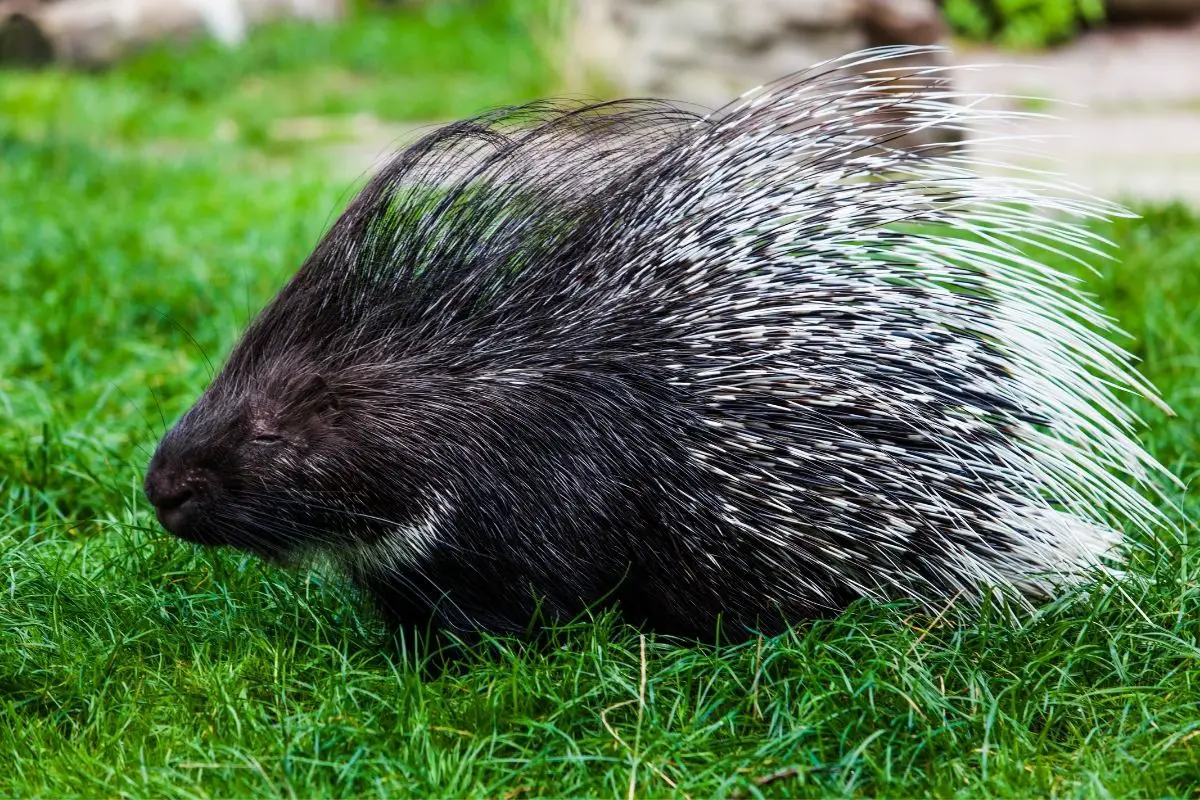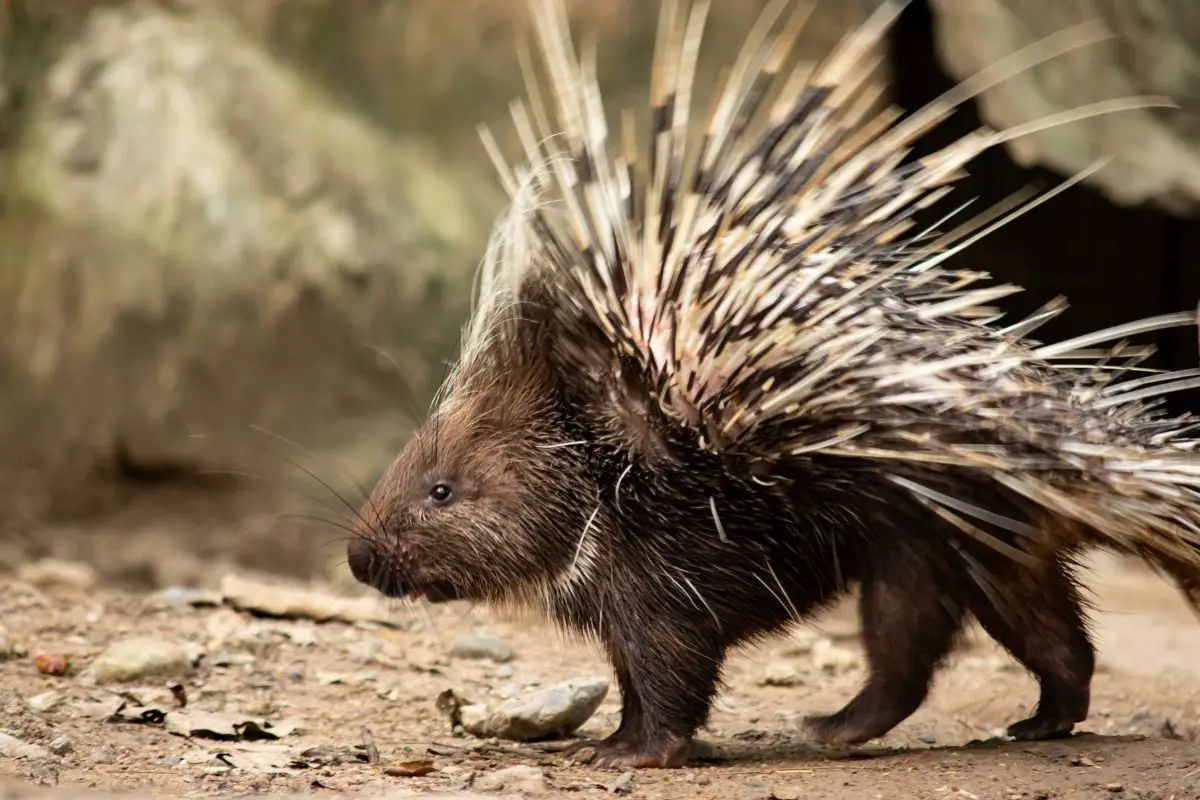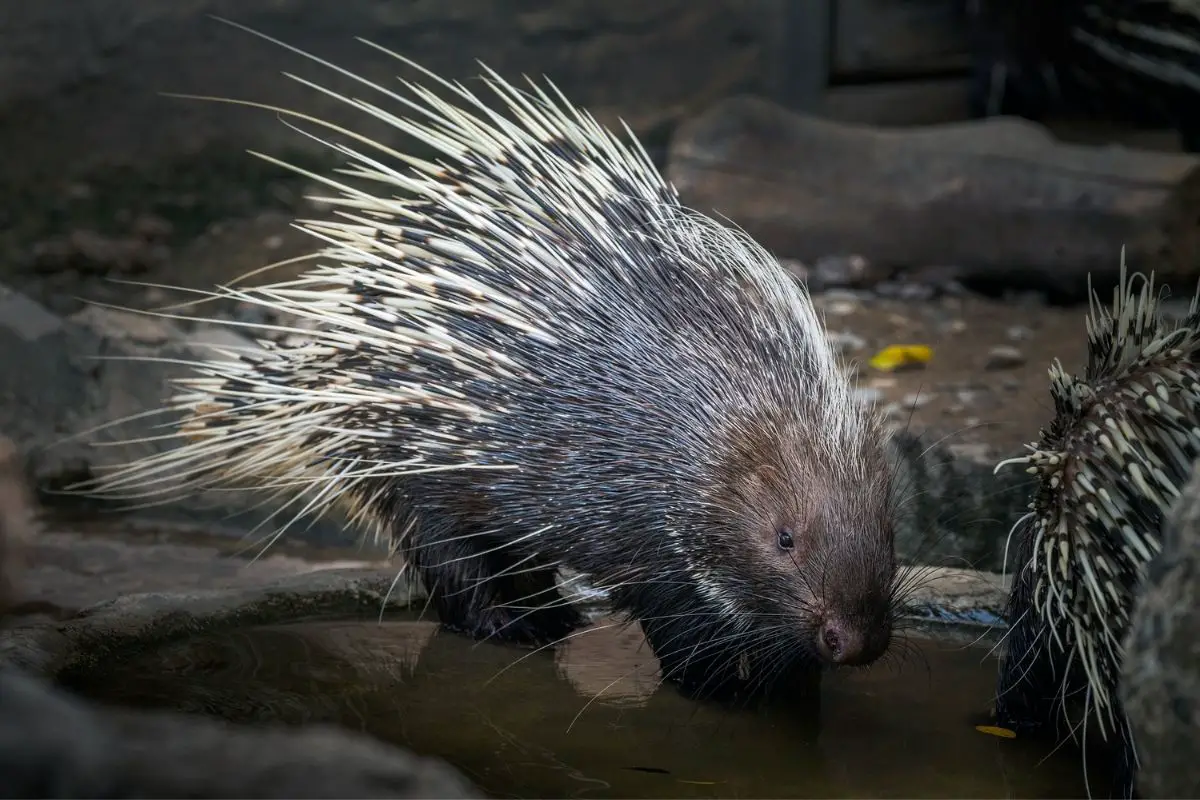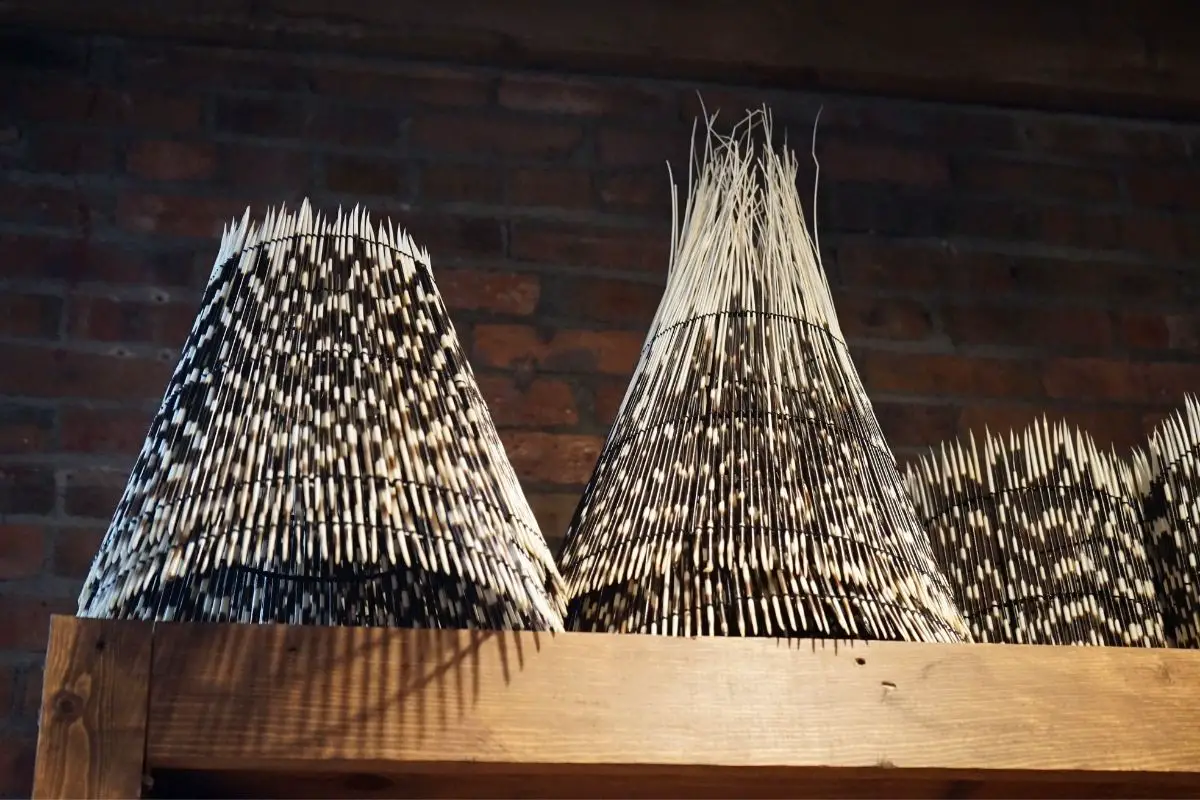
Porcupine quills are always growing. They are made of a material very similar to our hair and nails, so they would actually become way too long for the short, round little critter to navigate if old ones didn’t naturally fall out and grow back.
Porcupine quills are very interesting, so let’s take a look at how they work and how the porcupine doesn’t only use them for defense.
How Porcupine Quills are Structured

Porcupines are born with soft quills that harden within a few hours or days as the quills are exposed to air. The quills are actually modified hairs that are covered with keratin, much like human nails. They are loosely attached to the back, legs, and tail and are mixed with underfur, bristles, and guard hairs.
Each quill consists of 700-800 minute overlapping barbs that work like fish hooks when they attach to the skin. Different breeds of porcupines have different sized quills with the longest being a foot long! The porcupine has over 30,000 of these at any given time.
When the quills come into contact with something, they attach to the object and the backwards barbs keep them from falling out. As time goes on, they continue to work their way deeper into the flesh and can cause infection. The quills can sometimes embed themselves at a rate of one inch per day.
The quills are mainly hollow. Because of this, the porcupine is able to float on water. Not all porcupines like to swim, but many enjoy the ability to eat in peace, away from predators and they enjoy the delicacies of water plants they can’t find on land.
Not the First Line of Defense

The gentle porcupine doesn’t automatically attack with its quills. They will try to waddle away, but are often much slower than whatever is bothering them. The porcupine’s quills normally lie flat and muscles just under the skin allow him to raise them straight up.
Often, this will make him look two to three times his normal size. The little animal will then make a chattering noise by vibrating his teeth. At the same time, he will shake his tail.
The semi-hard quills will hit each other and make a sound similar to that of a rattlesnake. Next, the porcupine will release a cloud of noxious-smelling gas in the direction of the threat. While not as potent as that of a skunk, it is normally enough to deter the threat.
If all of this fails, the little creature will turn with his back toward the threat and run backwards until he makes contact. He can also swing his tail like a club, creating further damage. Contrary to popular belief, this little one can’t actually shoot quills like little bullets.
He has to have them make contact with something for them to detach.
Ouch, I Accidentally Pricked Myself
You wouldn’t think it possible, but porcupines can accidentally stick themselves with one of their quills. This normally happens because they love sleeping in trees, but let’s face it, those round bodies make them extremely clumsy and they often fall from the trees.
Nature was kind enough to coat the quills with an antibiotic substance that is thought to prevent infection in the porcupine himself if this happens.
Another porcupine will then help remove the quill by grasping it with its large front teeth and using its front paws for leverage as it pulls the quill out.
Collecting Quills for Artwork (Fun Fact)

Did you ever wonder where Native American women got all the quills that some use for the beautiful quillwork they do? Since porcupines aren’t something many people eat, they didn’t want to kill the critters.
Besides gathering the quills that were left behind when a porcupine brushed against things like trees and bushes, these women came up with an idea that didn’t actually harm the porcupine.
The women would throw a blanket over the porcupine. Porcupines being slow made this an easy task. They would then pull the blanket off the animal and it would be covered with quills.
They could then pull off the blanket and use in their artwork. As for the porcupine, he would wander on his way, probably cussing at the women in porcupine!
Summing It Up
Porcupines are one of nature’s gentlest and most fascinating creatures. These little balls of sharp quills would rather spend their days eating and sleeping and prefer to convince predators to leave them alone without fighting. When cornered, however, they bravely stand on their own and often come out on the top in any encounter.
From them, we can learn the valuable lesson that you don’t have to be the biggest or the fastest to win!



